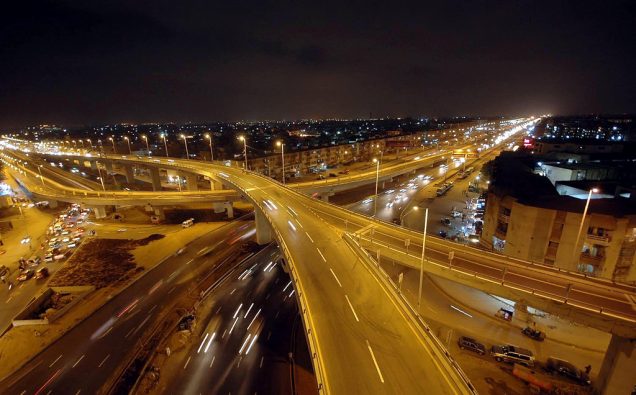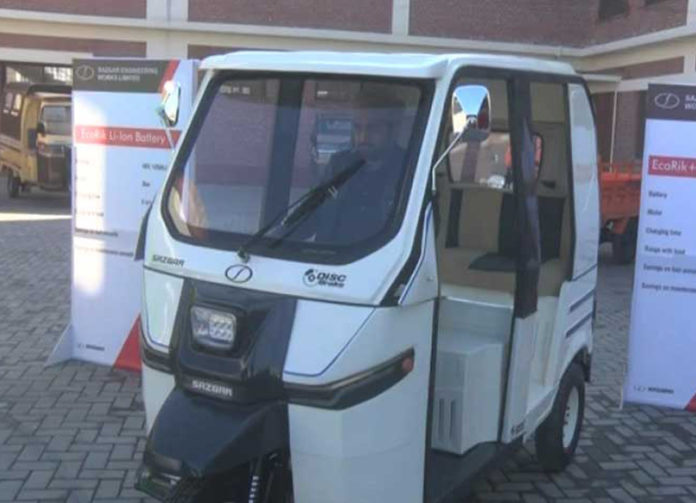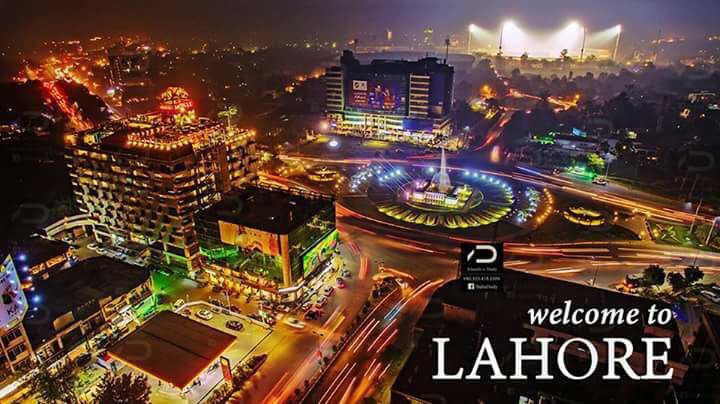
The prospect of electric vehicles running cleanly on roads and highways with zero emissions looks great – something like a pleasing sight of Elon Musk’s noiseless Tesla vehicles.
In Pakistan, the goal of having such vehicles running on roads is part of the federal government’s policy. But there is a big challenge toward achieving this goal primarily because an uninterrupted power supply still remains elusive.
Businesses and consumers have several questions about how conversion of fossil fuel fired vehicles to battery-mode might take place, and when might the country have enough electricity charging stations. Therefore, the whole process seems like a dilemma for this energy-starved South Asian nation.
In a bid to benefit from the recently formulated Electric Vehicle Policy that aims at converting petrol-based two, three and four-wheelers to electricity-based automobiles, a couple of automakers have introduced electric rickshaws, motorcycles and even cars as they race to exploit the huge potential market.
Three wheeler, Sazgar Autos was the first automaker to unveil Pakistan’s first locally manufactured electric rickshaw on January 24 in the eastern city of Lahore, also considered the hub of automobile manufacturing with major Japanese, Chinese and local payers jostling in the sector.
Jolta International had already introduced locally manufactured electric motorcycle last year. BAIC, the four-wheeler of Chinese origin is all set to start production in Lahore in June this year.
Apparently, this is a good beginning in terms of promotion of electric vehicles in this part of the world.
But a complete divorce with the petroleum as a fuel, may result in problems for the sector.
Despite all the claims about over-generation of electricity, there are still outages during the winter season when the power consumption goes as low as 10,000 megawatt against the nameplate generation capacity of over 27,000 megawatt, mainly from the expensive fuels like furnace oil.
So, the attempts to bring down petrol products import bill, initially by US$ one billion, may lead to production of expensive electricity at a rate as high as Rs 20 per unit from imported oil.

The first electric rickshaw made by Karsaz company was unveiled in January, 2020
“Within a decade, Pakistan may be able to cut down the petrol import bill by US $7 billion by embracing the electric vehicles technology,” says Advisor to Prime Minister on Climate Change, Malik Amin Aslam.
Power sector experts believe that the electricity demand for the vehicles may touch 1000 megawatt during next couple of years.
Even this much additional demand may be a source of constraint for country’s fragile power sector that has been having major breakdowns in the recent past.
The worst breakdowns were experienced in December 2014 and January 2015 when most of the parts of Pakistan would remain under the pall of darkness for more than 12 hours.
Secondly, the lack of charging infrastructure is another major reason why electric vehicles aren’t considered by the public at this early stage.
Charging time required by the electric vehicles and the driving range that they offer are considered to be the negative factors that discourage the local consumers from buying EVs.

A view of Lahore with cricket floodlit cricket stadium in the background. Photo: Roshan Pakistan via PCB
The charging infrastructure for electric vehicles in Pakistan has not been fully developed yet. Just a couple of public charging stations are in existence in Lahore and Karachi.
So, the energy experts are of the view that Pakistan should initially encourage the hybrid vehicles before encouraging all-electric vehicles.
The country has already had a significant market for hybrid vehicles with Honda’s Vezel, Toyota’s Prius and Aqua, and other models seen on the roads.
The Automotive Development Policy (2016–2021) and the launch of China-Pakistan Economic Corridor (CPEC) are encouraging foreign investments for the new automobile brands to enter Pakistani market, while the leading manufacturers in the automobile industry in Pakistan are now introducing EV models with a wide range of prices which target consumers of diverse income groups.
But Prime Minister Imran Khan’s Government seems to be in an overdrive mode, it still has a lot of steps to take. Pakistan’s federal cabinet had approved the first-ever national Electric Vehicles (EV) policy on November 6 last year, claiming that the conversion would help offset the effects of climate change and offer an affordable transport.
Under the policy, the government will focus on converting 30 per cent of the total number of vehicles, mainly cars and rickshaws, into EVs by 2030.
According to policy, 100,000 cars and 500,000 bikes and rickshaws will be converted to EVs in next 4 years, and more than 3,000 CNG stations that have been shut due to gas shortage will be converted to EV charging stations. Pakistan is also planning to set up special units of electric car manufacturing in the Special Economic Zones being established under the China-Pakistan Economic Corridor.
No doubt, conversion of all the vehicles to the non-fossil fuel is the need of hour and in the long run reduce Pakistan’s dependence on expensive imported oil. But Pakistan first needs to take necessary baby steps to avoid bumps that may come from jumps because the two-dimensional goal is testing and gigantic – to improve the climate as well as overcome economic woes due to multibillion-dollar petroleum imports.





![By Drsaeed90 (Own work) [CC BY-SA 4.0 (http://creativecommons.org/licenses/by-sa/4.0)], via Wikimedia Commons](https://www.viewsnews.net/wp-content/uploads/2016/11/Islamabad_Metro_Bus-1024x581.jpg)







